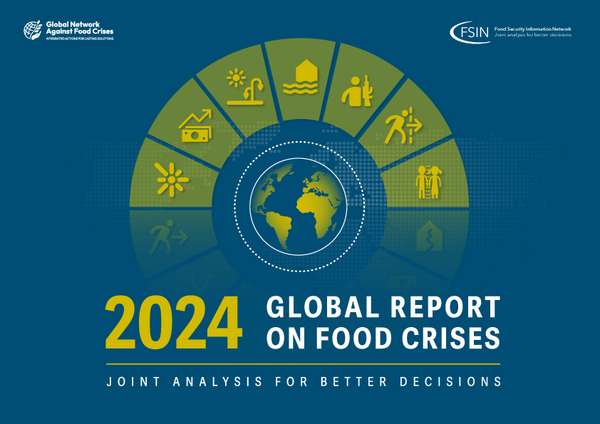 Read this article in French
Read this article in French- Share this article
- Subscribe to our newsletter
Global Report on Food Crises 2024
In 2023, nearly 282 million people across 59 countries and territories experienced high levels of acute hunger. This is a worldwide increase of 24 million on the previous year, according to the latest Global Report on Food Crises (GRFC). The rise was due to the report’s increased coverage of food crisis contexts as well as a sharp deterioration in food security, especially in the Gaza Strip and Sudan. The report was published in April 2024 by the Food Security Information Network (FSIN) and the Global Network Against Food Crises.
Children and women are at the forefront of these hunger crises, with over 36 million children under 5 years of age acutely malnourished across 32 countries, the report shows. Acute malnutrition worsened in 2023, particularly among people displaced because of conflict and disasters.
The Global Network Against Food Crises is urgently calling for an approach that integrates peace, prevention and development alongside large-scale emergency efforts to break the cycle of acute hunger.
Thirty-six countries have been consistently featured in the GRFC analyses since 2016, reflecting continuing years of acute hunger – they currently represent 80 per cent of the world’s most hungry.
There has also been an increase of 1 million people facing Emergency levels (IPC/CH Phase 4) of acute food insecurity across 39 countries and territories, with the biggest increase in Sudan.
In 2023, more than 705,000 people were at the Catastrophe level (IPC/CH Phase 5) of food insecurity and at risk of starvation – the highest number in the GRFC’s reporting history and up fourfold since 2016. The current situation in the Gaza Strip accounts for 80 per cent of those facing imminent famine, with the rest living in South Sudan, Burkina Faso, Somalia and Mali.
According to the report’s future outlook, around 1.1 million people in the Gaza Strip and 79,000 people in South Sudan are projected to be at Catastrophe level (IPC/CH Phase 5) by July 2024, bringing the total projected number of people at this level to almost 1.3 million.
Intensifying conflict and insecurity, the impacts of economic shocks, and the effects of extreme weather events are continuing to drive acute food insecurity. These interlinked drivers are exacerbating food systems fragility, rural marginalisation, poor governance and inequality. And this is leading to the large-scale displacement of populations globally. These populations are projected to continue to be impacted by food insecurity.
(EU/FAO/IFAD/UNHCR/UNICEF/WB/WFP/ile)
Read more on the FAO website





Add a comment
Comments :